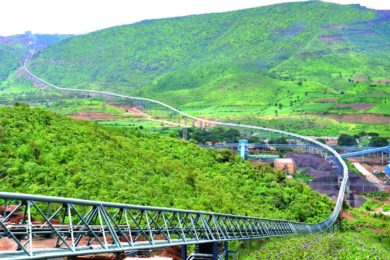America’s Office of Surface Mining Reclamation and Enforcement (OSM) has announced the availability of the final environmental impact statement (FEIS) evaluating potential changes to the excess spoil and coal mine waste disposal rules as well as the stream buffer zone rule. The final environmental impact statement provides decision makers with information about the impacts that could result if these rules are revised.
The rulemaking alternatives considered in the FEIS address two requirements of the Surface Mining Control and Reclamation Act of 1977 (SMCRA): to prevent additional contributions of sediment to streams outside the permit area, and to minimise adverse impacts on fish and wildlife and related environmental values. The alternatives would address environmental concerns about the impacts of disposal of excess rock from coal mine excavation (“excess spoil”), coal mine waste, and other coal mining activities in and around streams. They would require minimisation of impacts from these activities, and would clarify existing requirements that are not now interpreted consistently.
OSM published a proposed excess spoil minimisation — stream buffer zone rule in August 2007 and released the associated draft environmental impact statement. Consistent with the National Environmental Policy Act, after considering a range of seventeen alternatives, OSM narrowed the environmental analysis to four action alternatives and a fifth “take no action” alternative.
Of the five alternatives, the most environmentally-protective alternative is also OSM’s preferred alternative. The FEIS concludes that the net environmental effect of the preferred alternative is slightly positive because it requires coal mining operations to minimise certain impacts: the volume of rock and spoil disposed outside the mined area; the footprint of the disposal area; and the adverse effects from excess spoil and coal mine waste disposal (“minimisation requirements”). The other four alternatives analyzed by the FEIS would result in little or no net environmental change.
The preferred alternative would also require coal mining activities to avoid the area in or within 30 m (100 ft) of an intermittent or perennial stream (‘the stream buffer zone”), or show why avoidance is not possible. Activities in the stream buffer zone would be prohibited unless OSM grants a waiver, or unless the activity is specifically exempted from the prohibition.
OSM received approximately 2,000 written comments on the draft environmental impact statement during the 88-day comment period. Additionally OSM held four public hearings and two public meetings at which 750 people attended and 212 people spoke.
All the comments were reviewed to ensure the accuracy and completeness of the environmental impact statement. The FEIS includes detailed responses to all substantial comments.
The FEIS is a two book set. Book One is the main body of the EIS. Book Two contains the appendences such as OSM’s response to the comments, hearing transcripts and copies of comment letters.
Book One is located at:
http://www.regulations.gov/fdmspublic/component/main?main=DocumentDetail&d=OSM-2007-0008-0553.
Book Two is located at:
http://www.regulations.gov/fdmspublic/component/main?main=DocumentDetail&d=OSM-2007-0008-0553.1








